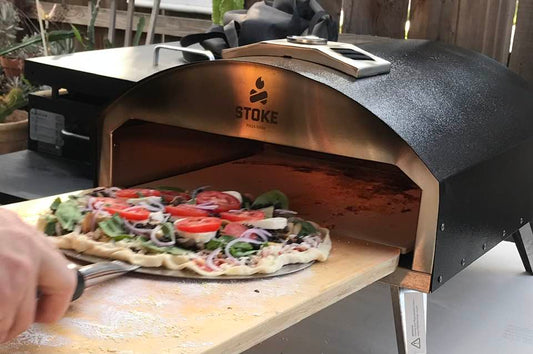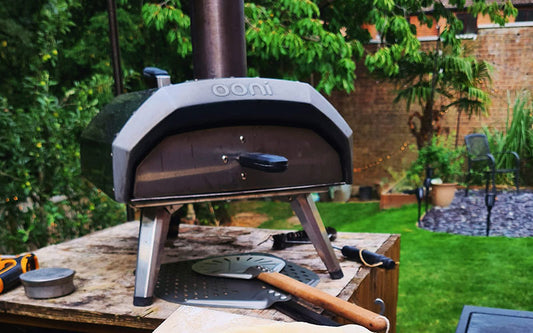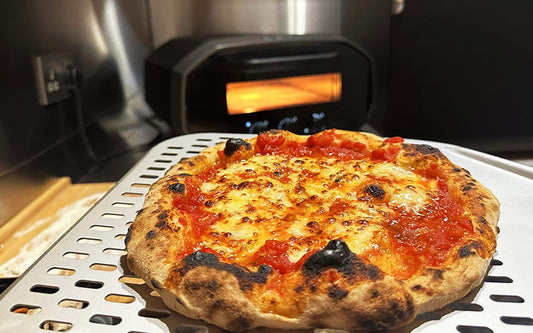Fun fact: undercooked pizzas are considered a hate crime in every country on this planet. It’s not in the law books, but that’s beside the point. In today’s article, I’ll share some (hard-learned) tips on how to detect undercooked pizza and how to salvage one, just in case you end up with one.
The easiest way to tell if the pizza is undercooked is by noticing if it’s a goopy, soggy mess in the middle/at the bottom. Visual signs like a very pale crust and a gummy texture are also tell-tale signs that the crust could use a few more minutes in the oven.
In this article, I’ll be thoroughly discussing all the possible ways to tell if your pizza is slightly or extremely under. I will also discuss the possible culprits and effective ways to avoid it in the future.
But first, let’s address the biggest elephant in the room:
Is It Safe to Eat Undercooked Pizza Dough?
No.
Raw dough is very hard to digest. So, eating large quantities of undercooked pizza can lead to digestive issues and severe tummy aches. Moreover, the uncooked dough may harbor bacteria like E. coli, Salmonella, Staphylococcus aureus, and Listeria which could lead to severe food poisoning. However, eating a small slice won’t kill you. So relax.
Signs of an Undercooked Pizza Dough
1. The Crust Is Soggy at the Center/Bottom
A soggy, sticky crust is a clear indication that your pizza is undercooked. The crust needs to be light and crispy, with a pleasant amount of chewiness to provide a good textural contrast to the soft toppings.
A soggy crust can be the result of several factors.
Not preheating the oven and overloading the pizza with toppings being the most usual ones. Simply baking it for a few more minutes won’t make a difference in this case. You have to preheat the oven for at least 30 minutes and make sure to spread the toppings evenly.
2. The Crust Looks Pale
A well-done pizza crust should be evenly browned from all sides. If the pizza is taken out of the oven too soon, the crust won’t have enough time to brown and will remain pale.
3. Unappetizing Texture and Mouthfeel
An underbaked pizza dough will have a dense, heavy texture with a gummy and chewy mouthfeel. The dough will not be crisp and will likely still have a raw, doughy flavor. When you take a bite, the texture may be sticky and the dough may pull away from the roof of your mouth.

An underbaked crust will also have a tendency to collapse, making it difficult to cut and eat. On the contrary, a properly baked pizza crust should be light and airy, with a crispy exterior and a tender, chewy interior.
4. A Very Prominent Gum Line
All pizzas have gum lines. It is the thin, doughy part between the crust and toppings. If the gum line is thicker than 4mm, the crust is going to taste like raw dough. Thick gum lines are caused by the use of the watery sauce. The excess moisture prevents the dough from baking evenly.
Here’s another possible explanation:
If you are using a high-hydration dough, baking it too quickly won’t allow all the water to evaporate fully. Excess moisture = thicker gum line.
In other words, a proper balance of temperature and bake time is key to unlocking the full potential of high-hydration doughs and creating a well-cooked crust.
5. The Thermometer Has Spoken
The internal temperature of a well-done pizza crust should be 200-208 degrees. Anything lower than that means the crust needs a few more minutes in the oven.
Factors That Contribute to Undercooked Pizza Dough
The dough is the foundation of every pizza, and if it’s underbaked, it can ruin the entire dish. There are several factors that contribute to undercooked pizza dough. And understanding these factors can help you avoid this common mistake.

The Dough Is Not at Room Temperature
First things first, don’t make the rookie mistake of putting cold dough in a hot oven. Sure, it might be easier to handle when it’s cold, but that’s because it hasn’t started to cook yet.
And when you put it in the oven, it’ll blister more, especially if you’re going for that classic Neapolitan style with the leopard spots.
But here’s the catch – it’ll be much harder to cook the dough all the way through. The key is to let your dough warm up to room temperature before you start cooking.
That way, it’ll rise in temperature along with the toppings and cheese, making it easier for the dough to cook evenly and turn golden brown.
Incorrect Baking Temperature or Time
Baking temperature and time are crucial aspects of crafting the perfect pizza. If the oven is too hot, your crust might burn before it’s fully cooked, and if it’s too low, it will result in a doughy, undercooked base. This is why it’s important to set the oven temperature according to the recipe and follow the recommended baking time.
An underbaked crust not only affects the texture and taste but can also be unhealthy if the dough hasn’t been cooked fully to kill any potential bacteria.
The Oven Isn’t Properly Preheated
Preheating the oven is crucial to the success of your pizza. It allows the oven to reach the desired temperature so that the pizza can cook evenly and achieve the desired texture and doneness.
Ooni ovens require an hour of preheating time, while domestic ovens need around 35 minutes. That’s assuming you’re using a stone. It could take 20-25 minutes if you are using a steel or cast iron pan.
Way Too Many Wet Toppings
A runny sauce or an abundant amount of veggie toppings can also prevent your crust from baking all the way through. The excess moisture from these elements can leach into the dough, preventing it from crisping up the way it should.
Not Letting the Pizza Stone Reheat Between Multiple Batches
Pizza stones start losing heat as the dough bakes by absorbing moisture from the dough. If you don’t let the stone reheat for at least 10 minutes after each bake, chances are, you’ll end up with an underbaked crust.
Some Useful Tips to Avoid an Undercooked Pizza
Heat and baking time can make or break your crust. Every oven is different, so the temperature and baking time mentioned in the recipe you’re following might not always work for you.
On the brighter side, though, people usually get the hang of it after a couple of trials and errors. Here are a few more precautions you can take to avoid a pale, gooey mess called undercooked pizza:
- Use an infrared oven thermometer to check the internal temperature of the pie. If it registers between 200-208 F, you are good to go.
- Keep a close eye on the pizza when it’s in the oven. I use a pizza spinner to check the doneness level of the bottom of the crust.
- Give the oven enough time to preheat. It could be anywhere between 20 minutes to an hour, depending on your oven and the kind of baking utensil you’re using. The point of preheating is to let the oven reach the temperature you need for baking the dough.
- Invest in a high-quality baking stone or steel to aid uniform heat distribution while baking.
- If your oven has convection mode, use it.
How Can You Recover Undercooked Pizza Dough?
About 90% of the time, popping the pie back in the oven and letting it bake for 3-5 more minutes does the trick. If you have received an underbaked takeaway pizza, microwaving it for a minute will crisp it up nicely. 5 minutes in a preheated oven will also work.
In Conclusion
To wrap things up, spotting an undercooked pizza is a piece of cake (or rather, a slice of pizza). Just pay attention to the crust’s color, texture, and overall doneness. If the dough is still raw and the crust lacks that beautiful golden hue, it’s time to pop it back in the oven.
Mastering the art of perfectly baked pizza is worth the extra effort. So give these tips a try and savor the delicious rewards of your culinary expertise. Bon appétit!




